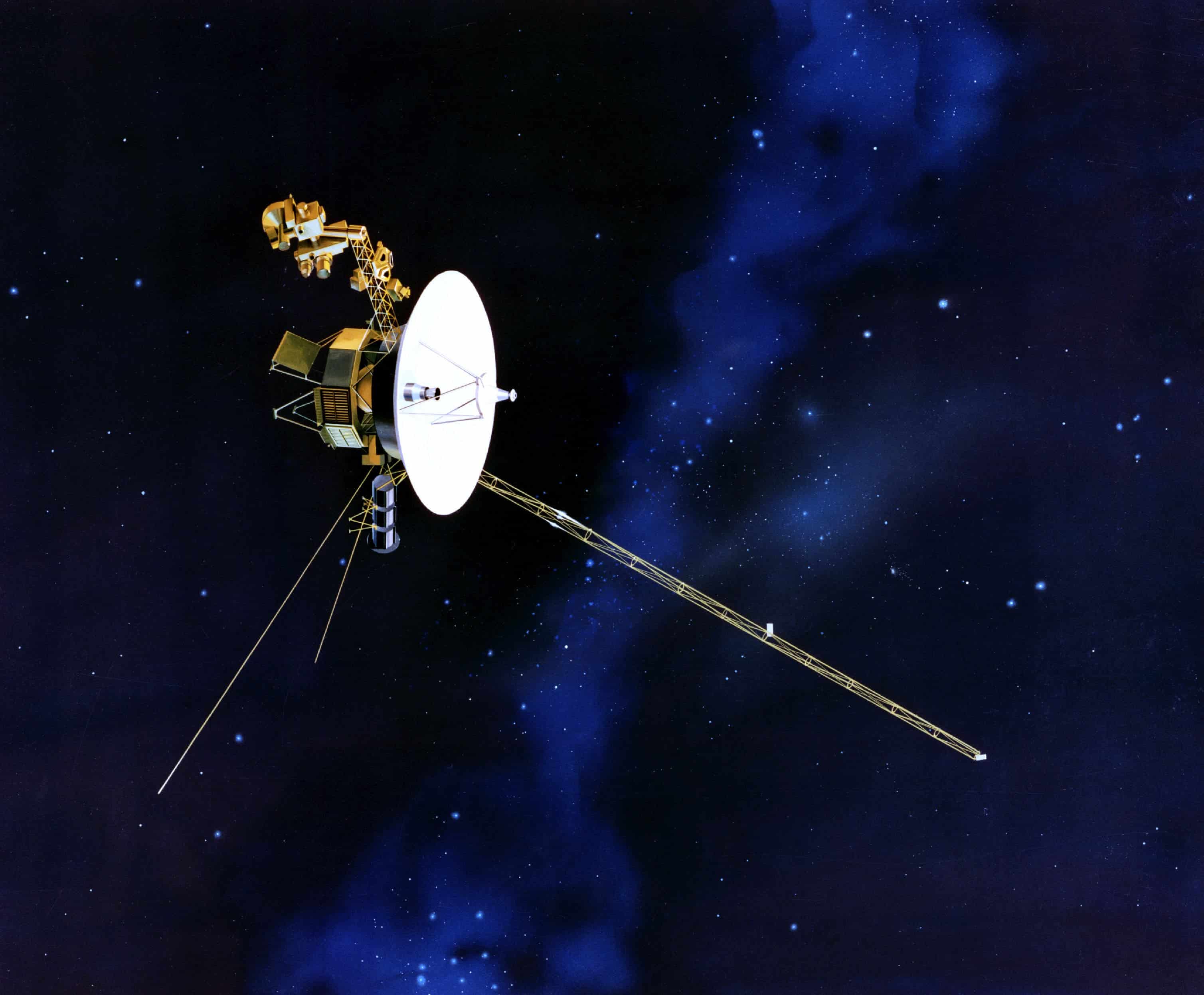


NASA's Voyager 1 spacecraft, which has been traveling through interstellar space for the past 47 years, recently lost contact with Earth. However, thanks to a radio transmitter that had not been used since 1981, the American space agency was able to re-establish communication with the spacecraft. This unexpected reconnection occurred after the team hypothesized that Voyager 1's fault protection system had triggered and switched to an alternate radio transmitter. The success of this reconnection marks a major milestone for the Voyager mission and opens up new possibilities for communication with the distant spacecraft.
NASA Re-establishes Communication with Voyager 1 After 47 Years
NASA's Voyager 1 spacecraft, launched in 1977, has been exploring interstellar space for the past 47 years. In March 2023, the spacecraft experienced an anomaly that disrupted communication with Earth. However, using a backup transmitter that had not been used in decades, the space agency has successfully re-established contact with Voyager 1.
Background
Voyager 1 is one of two identical spacecraft launched by NASA in the 1970s to explore the outer planets. The spacecraft have traveled billions of miles from Earth and have provided invaluable scientific data on the planets they have encountered.
Anomaly and Recovery
In March 2023, Voyager 1 experienced an anomaly that affected its Attitude Control System (ACS). The ACS is responsible for keeping the spacecraft oriented correctly in space. The anomaly caused the ACS to become less responsive, resulting in the loss of communication with Earth.
NASA engineers hypothesized that Voyager 1's fault protection system had triggered and switched to an alternate radio transmitter. This transmitter, which had been in standby mode since 1981, was designed as a backup in case of a primary transmitter failure.
Using the backup transmitter, NASA was able to re-establish communication with Voyager 1 on April 5, 2023. The spacecraft is now operating normally and transmitting data back to Earth.
Significance of the Reconnection
The reconnection with Voyager 1 is a major milestone for the Voyager mission. It proves that the spacecraft is still operational despite its age and the challenges of interstellar space.
The reconnection also opens up new possibilities for communication with Voyager 1. The backup transmitter was previously only used for telemetry transmissions. However, NASA is now exploring the possibility of using it for full-duplex communication, which would allow for more complex commands and data transfers.
FAQs
1. What caused the anomaly on Voyager 1? Answer: The cause of the anomaly is still under investigation. However, NASA believes that it was likely related to a software issue in the ACS.
2. Why was the backup transmitter not used previously? Answer: The backup transmitter was kept in reserve as a contingency plan in case the primary transmitter failed. NASA wanted to conserve its power and resources until it was absolutely necessary.
3. How long will Voyager 1 continue to operate? Answer: Voyager 1 is expected to continue transmitting data back to Earth until its power source, a Radioisotope Thermoelectric Generator (RTG), is depleted. This is expected to happen sometime in the 2030s.
4. What scientific discoveries has Voyager 1 made? Answer: Voyager 1 has made numerous scientific discoveries, including the first detailed images of Jupiter and Saturn, the discovery of lightning on Jupiter's moon Io, and the first flyby of Uranus and Neptune.
5. Will Voyager 1 ever return to Earth? Answer: No, Voyager 1 is too far away and traveling too fast to return to Earth. It is expected to eventually leave the solar system and enter interstellar space.

The Text With Jesus app, powered by OpenAI's ChatGPT, has gained popularity since its launch, despite skeptics calling it blasphemy. Users can engage in AI-generated conversations with famous Biblical figures like Jesus and Moses, receiving scripture-based advice on various topics. Creator Stéphane Peter shares that most users have come to the app out of curiosity and are embracing the unique experience.

With the demand for fast, secure, and reliable connectivity in the Industry 4.0 era, private 5G networks are emerging as a game changer. Leading this charge is telecom innovator Rahul Bangera, who has extensive experience in integrating industrial networks with core business systems. By making technology invisible and enabling real-time data flow, his solutions are improving efficiency, safety, and decision-making in manufacturing sites. Additionally, he has addressed workforce readiness and cybersecurity hurdles with comprehensive managed services. As the industry heads towards the convergence of secure connectivity, edge computing, and AI, the potential for self-optimizing, intelligent factories is endless.

In a major partnership, Google and Reliance have announced that they will provide Jio users with free access to Google's AI Pro plan, powered by the latest Gemini 2.5 Pro model. This offer, generally worth Rs 35,100, will give eligible users access to enhanced AI image and video generation capabilities, along with increased storage and productivity tools. Additionally, Google Cloud will serve as Reliance Intelligence's strategic AI infrastructure partner, empowering Indian companies to adopt Gemini Enterprise and build complex and capable AI applications domestically.

Google has teamed up with Reliance Intelligence to offer its top-tier AI Pro plan, featuring the latest Gemini 2.5 Pro model, to Jio Unlimited 5G subscribers for 18 months at no additional cost. The collaboration aims to expand access to advanced AI tools for millions of users in India, with an initial rollout to 18-25 year olds before expanding nationwide. Along with Gemini Pro, the plan will also provide higher limits for generating images and videos, expanded access to NotebookLM, and 2 TB of cloud storage. The move reflects a growing trend among telecom providers to bundle premium AI products into their mobile plans, following in the footsteps of Airtel and OpenAI.

Thousands of users worldwide are unable to access critical services such as Azure, Microsoft 365, Teams, Outlook, and the Microsoft Store due to widespread downtime across several of Microsoft's key platforms. The outage has also affected major corporate clients like Starbucks, Kroger, and Costco, highlighting the extent of the problem. While Microsoft has acknowledged the issue and is working on a solution, frustrated users have taken to social media to express their displeasure and even poke fun at the situation.

Elon Musk has once again stirred the tech world with the launch of Grokipedia, his version of Wikipedia, powered by AI. With its first iteration already live, Musk claims that Grokipedia 0.1 is superior to Wikipedia, and version 1.0 will be a whopping 10 times better. As this new platform takes on the task of compiling and updating information with the help of AI, we explore the key differences between Wikipedia and Grokipedia.

Gone are the days of standing in long queues to update your Aadhaar card. With the new rule, you can now make any changes or corrections to your Aadhaar information online, without having to visit an enrolment centre. This means that updating your name, address, date of birth, or mobile number will be faster, simpler, and more secure than ever before. Say goodbye to the hassle and hello to convenience with this game-changing update to the Aadhaar system!

Entrepreneur and inventor Elon Musk has launched a new online encyclopedia called Grokipedia, which he claims will provide a more balanced and unbiased view of controversial subjects compared to Wikipedia. Although some entries on the site appear identical to those on Wikipedia, many users have praised Grokipedia for its nuanced and detail-oriented approach. However, others remain skeptical and have pointed out that some pages on Grokipedia appear to have been lifted directly from Wikipedia without proper credit. Nonetheless, Musk has emphasized that his goal with Grokipedia is to provide "the truth, the whole truth, and nothing but the truth."

During a meeting with Indian Police Service probationers, President Droupadi Murmu emphasized the importance of technology in policing and the potential threat of "digital arrest". Murmu stated that India's economic growth relies on effective policing for maintaining law and order and attracting investment. She also highlighted the role of a future-ready police force, led by young officers, in shaping a technologically-advanced 'Viksit Bharat'. "Digital arrest" refers to a scam where fraudsters pose as law enforcement officials and use threats of arrest and other means to extort money from victims.

South African entrepreneur Elon Musk's social media platform X, formerly known as Twitter, has announced that it will no longer use the Twitter domain for two-factor authentication. This update primarily affects users who utilize hardware security keys or passkeys and they must re-enroll their credentials on X.com before November 10 to avoid being locked out of their accounts. This move reflects Musk's long-standing ambition to revitalize the X.com brand, which he founded in 1999 and later merged with Confinity to create PayPal.